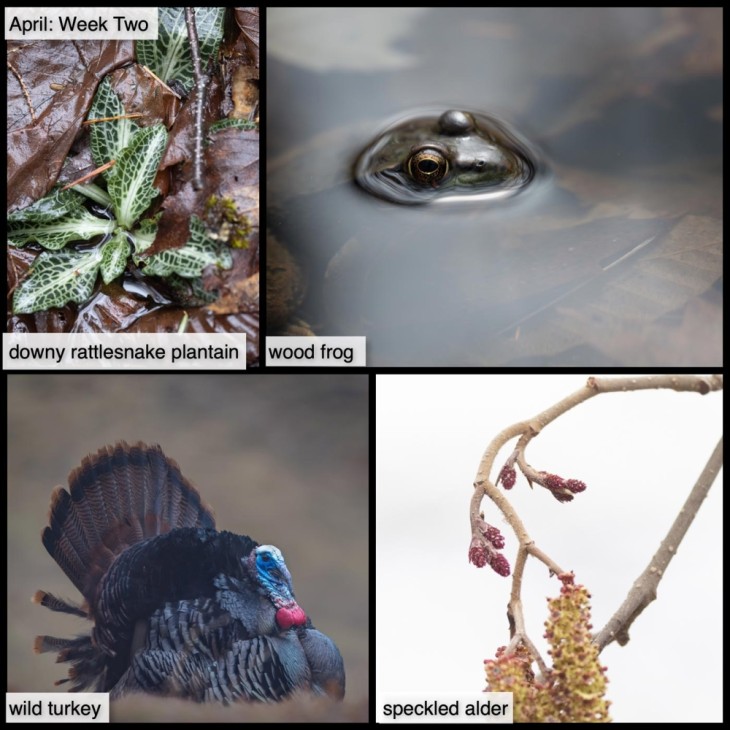What a difference a few days makes! This week in the woods, we’ve been hearing new birdsongs, including the impressively loud, fast notes of winter wrens. As noted in this recent Outside Story article by Kenrick Vezina, “weighing less than half an ounce, and with a wingspan of a mere 5 to 6 inches, these birds look like mousy brown balls with pert tails and tiny beaks. And yet they can fill an entire bottomland forest with song.” Vezina goes on to note that a male winter wren can attain an impressive 90 decibels, which is about ten times louder, per pound of bird, than a crowing rooster. Here’s an information page about winter wrens from Audubon, with sound files of their calls.
As the snow disappears, we’re discovering more evergreen plants on the forest floor, and on a recent hike, were delighted to encounter a large patch of downy rattlesnake plantain. As previously noted before in this blog, this small woodland orchid supposedly gets its name from the snakeskin-like pattern on its leaves, but its summer inflorescence – a spike that rises high over the rest of the plant and can sway in the wind – looks a lot like a rattlesnake tail.
Another welcome new sound this week: the chuckling calls of male wood frogs. Early amphibian migration is underway, although it’s still early enough in the season that higher altitude and more shaded pools aren’t showing activity yet. As Vezina notes in the article referenced above, “[t]he trick to frogs’ vocal talents is their expandable throat pouches. These air sacs offer two advantages. First, they’re built-in resonating chambers, allowing frogs to amplify their calls. Second, they allow frogs to sing continuously without needing to inhale: air passes from the lungs to the air sac, then back again multiple times in a single breath.”
Tom wild turkeys are performing their courtship displays among flocks of hens in fields and lawns, and they look a bit silly (many hens seem to share this opinion): dragging their wings, fluffing up their feathers and fanning their tails.
Finally, if you’re feeling flower deprived by this late spring, look for speckled alders, one of our earliest native bloomers. The yellow catkins are male flowers, and the smaller rosy ones, situated above the catkins, are female flowers.
What have you noticed in the woods this week? Submit a recent photo for possible inclusion in our monthly online Reader Photo Gallery.



Discussion *